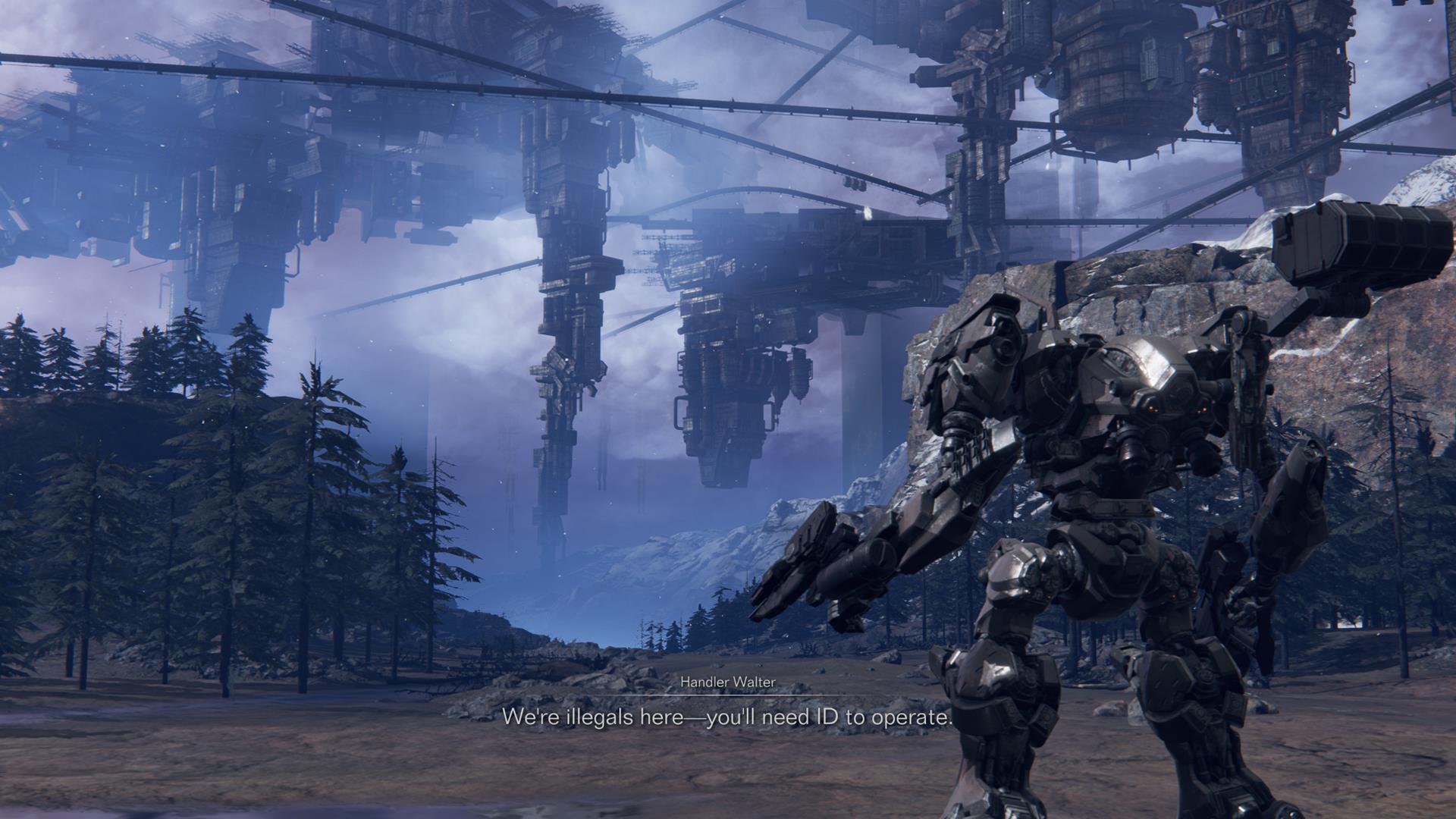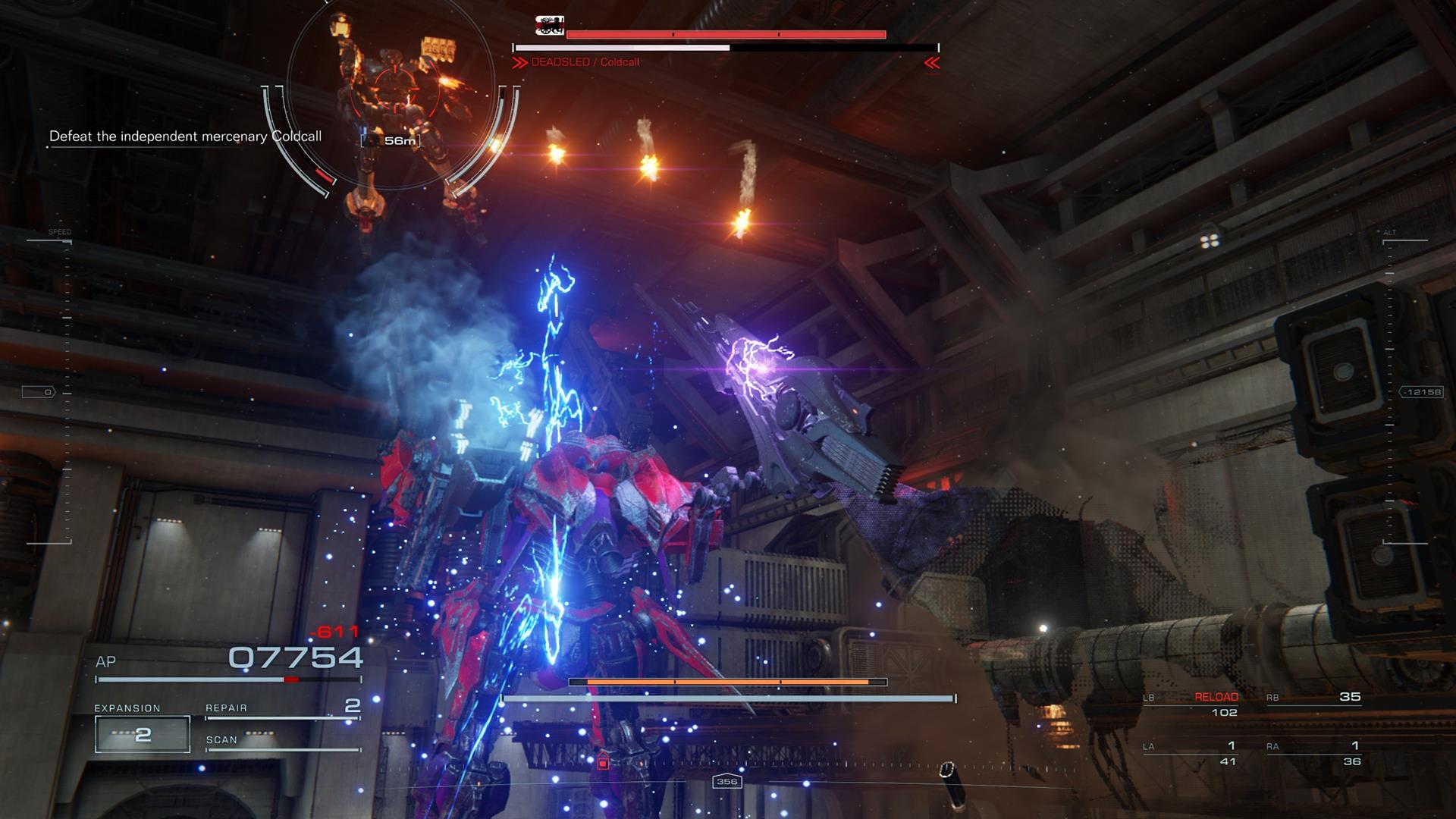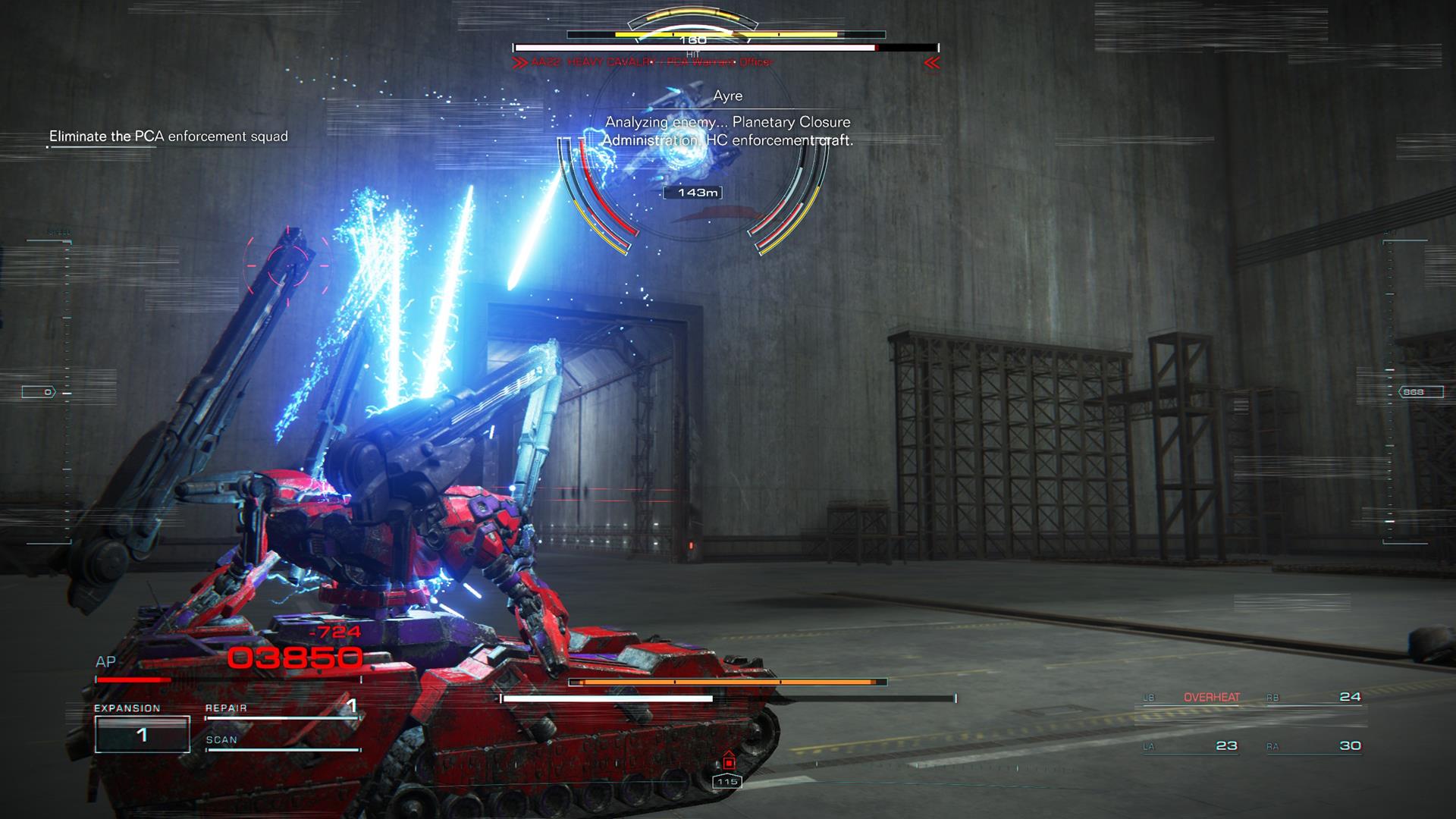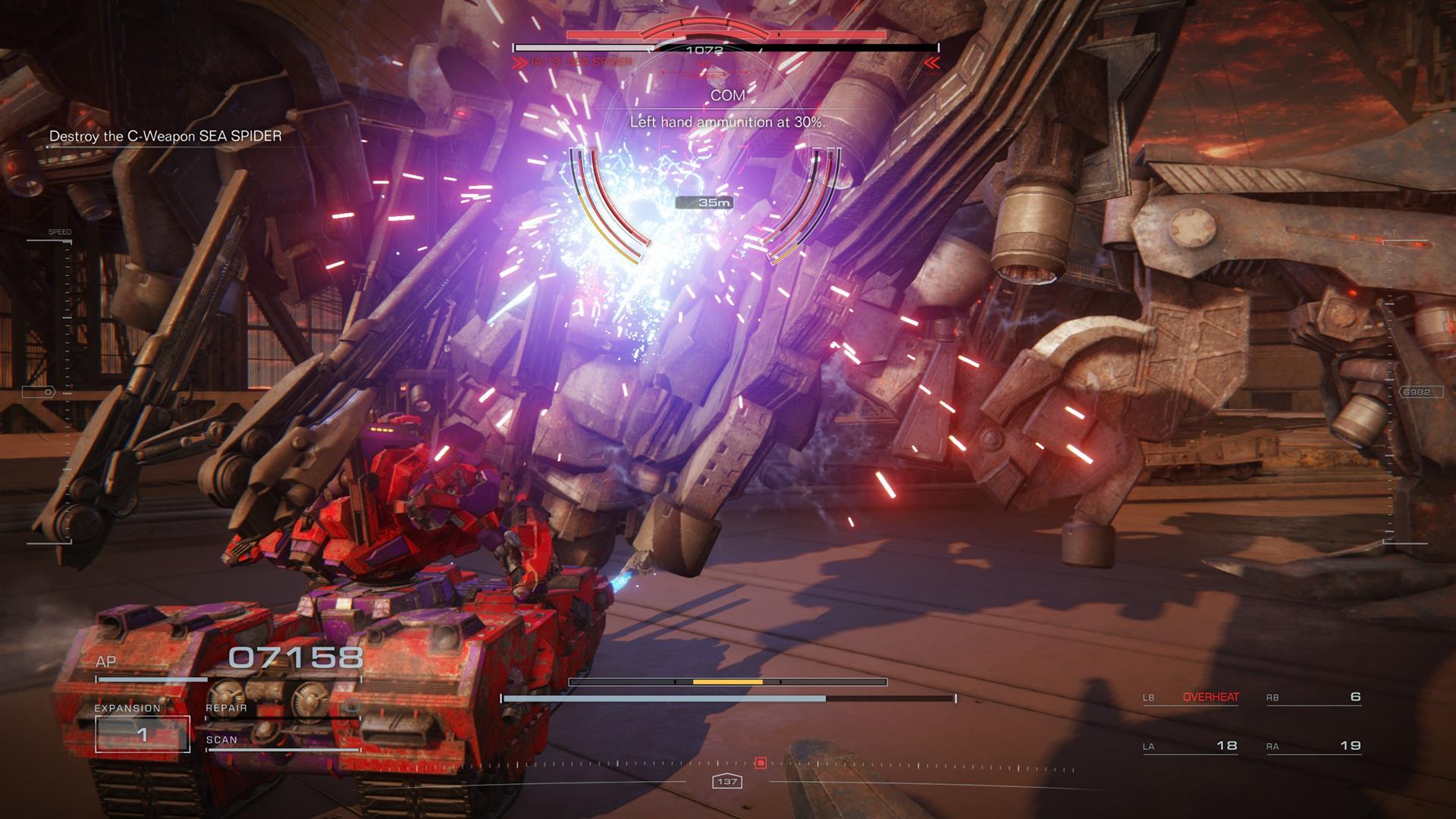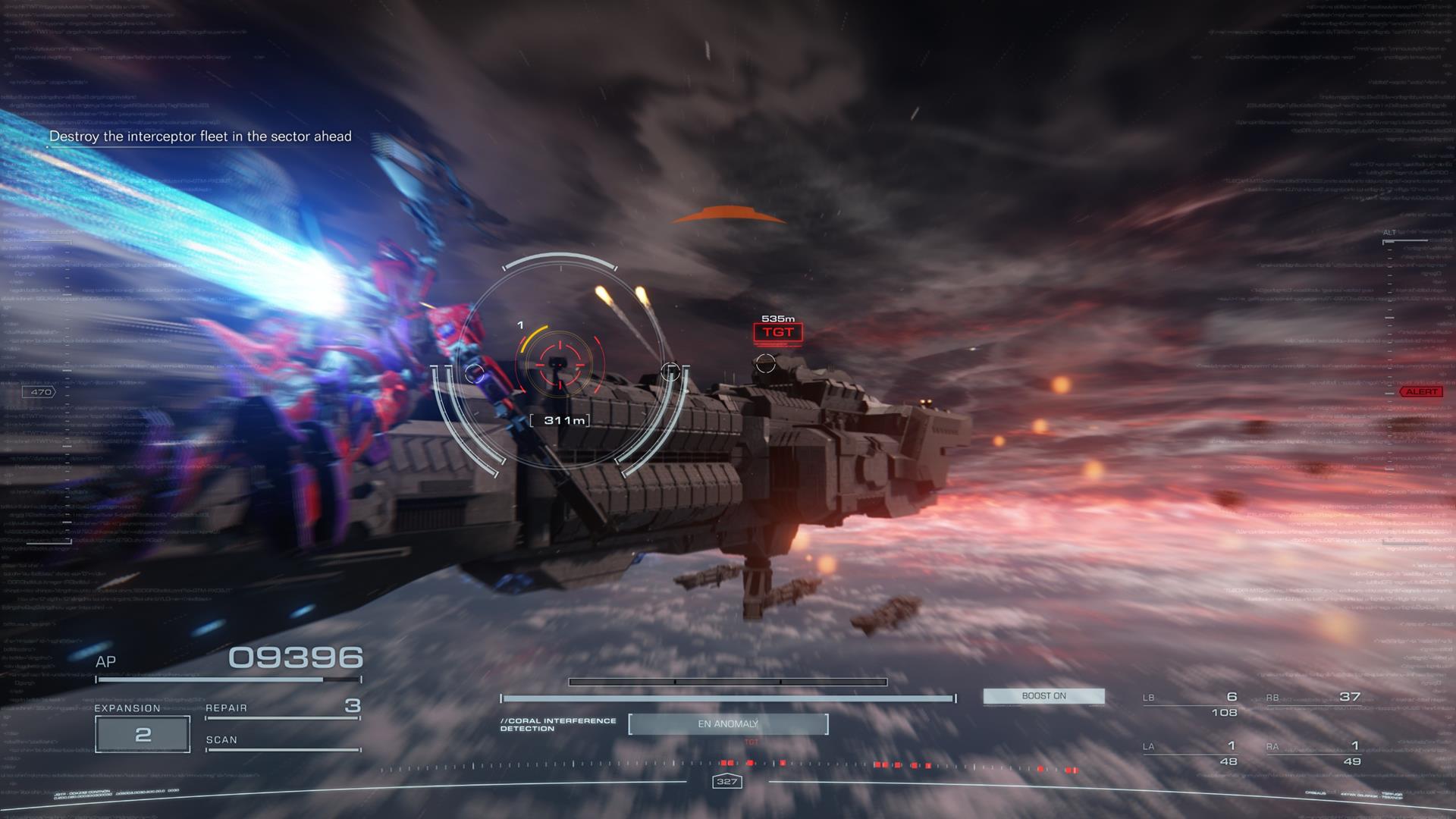Our Verdict
Armored Core 6 is easily one of the best mech games around, with blisteringly fast combat and a big focus on customization, even if its difficulty is lacking and repetition sets in before the end.
I wasn’t sure that we’d ever see the return of Armored Core. The announcement of Armored Core 6 left me thrilled, even if I was worried that series developer FromSoftware would feel compelled to draw heavily from its Dark Souls games and last year’s Elden Ring to reenergize the long-dormant mech series. Thankfully, our Armored Core 6 review will show that this latest entry is almost entirely faithful to its roots, even if that might be bad news for players that aren’t open to some serious repetition and a surprisingly low level of difficulty.
The Armored Core 6 missions kick off with a mercenary handler named Walter waking you up in space. You’re then dropped into a city specifically to find a derelict mech containing a salvageable callsign that will allow you to join up as a mercenary. The stage is the planet Rubicon 3, which is closely guarded by the Planetary Closure Administration after humanity’s exploitation of a fuel-like substance known as Coral caused a natural disaster. This was averted by invoking something called the Fires of Ibis, which burned the Coral and left the planet reeling.
Years later, the corporations Balam and Arquebus are poking around on Rubicon 3, and you, who quickly adopts the callsign Raven, end up getting in the middle of it all. Your presence and efforts will impact the very future of the planet and, potentially, the human race as we know it. The plot is mainly told through static screens with voiced dialogue, although there are some more elaborate cutscenes in the mix too. The plot and characters are surprisingly engaging, and Armored Core 6 makes it easy to understand who everyone is and what is happening, even if it can be a lot to take in at first.
The game’s structure is simple. It’s broken up into five chapters, each with a set of missions to complete in order to progress the story. Sometimes it’ll just be one mission, other times there will be multiple to pick from. On occasion, missions will be marked with an icon indicating that you have to choose between two of them. These choices don’t tend to mean much for most of the game, but they do become important for getting the third of three Armored Core 6 endings. The game contains a total of 59 missions, and you can easily return to replay all of them via the menu whenever you fancy.
The mission variety here is solid, at least on your first run. You’ll be destroying targets, protecting them, assassinating key figures, or searching for data for the most part. There’s even a forced stealth mission, though it’s thankfully lenient in regards to going loud. Missions have Armored Core 6 parts hidden in chests, as well as enemies to kill off the beaten path that reward you with logs. Collecting enough of these will grant you even more parts for your mech, of which there are many. On subsequent runs, you can also try for high scores, reflected within the game’s ranks system.
You’ll outfit your mech with the aforementioned found parts, which include Armored Core 6 weapon parts, AC6 frame parts, and AC6 inner parts. You can equip four weapons at a time, one in each hand and one on each shoulder, and the weight of your parts will determine how nimbly you can move. You can save your Armored Core 6 builds for easy switching, which is very useful, as different tasks benefit from different builds.
Combat is where Armored Core 6 truly shines, of course. The game is ridiculously fast-paced, as you’ll find yourself rapidly boosting around and engaging with enemies. Most regular foes are brittle and can be dispatched with very few shots, so much of the game is spent wreaking havoc at a breakneck pace. This is consistently invigorating, especially once you grow accustomed to your preferred playstyle. Weapons are a blast to use, as they’re weighty and the feedback is glorious.
Much like many other mech games, Armored Core 6 doesn’t really make you feel like you’re piloting a giant mech. Scale-wise, everything tends to feel rather small, even if the mech’s movements feel appropriately heavy. As for weapons, they’re broken up into three categories: kinetic, energy, and explosives. Assault rifles, shotguns, laser rifles, missile launchers, and bazookas are all available, with stronger varieties of each showing up as you progress further. Of course, some weapons are notably more useful than others, as the game has an important addition to the series lexicon: staggering.
To be clear, there’s a huge emphasis on this. If you played Sekiro, it will feel even more familiar, as it’s utilized here to a similar extent. You’ll frequently come up against enemy mechs with capabilities similar to your own, and doing impact damage to them will fill up their stagger bar. Once it’s full, the enemy will become immobile for a time and any further attacks on them will do increased damage. Naturally, you also have a stagger bar. This took a bit of an adjustment for me, especially when battling against the Armored Core 6 bosses.
I had assumed that boss fights were going to be more like Dark Souls as opposed to classic Armored Core affairs, though the closest comparison may actually be Sekiro’s duels. Boss fights aren’t about learning movesets and figuring out when to dodge while getting your licks in. Instead, they’re about playing aggressively and staggering the boss as quickly as you can. Almost all of Armored Core 6’s boss fights take just a couple of minutes to complete once you know to go for the kill and not hang back. I really struggled with the game’s early bosses before realizing that focusing on staggering them with powerful impact attacks was the way to win. Once I figured that out, few bosses gave me any trouble, which I was not expecting.
Fights with stronger enemy mechs go the same way. You rush at them, stagger them, and then quickly blast them to pieces. As such, Armored Core 6 isn’t at all difficult once you adapt to it. Sure, fights with enemy mechs are blindingly fast, but as long as you focus on staggering them and staying mobile at all times, they simply don’t tend to pose much of a threat. There are no Armored Core 6 difficulty settings to speak of either, so if you’re expecting to find that trademark FromSoftware difficulty here, you’re going to be disappointed.
The same can be said about the Armored Core 6 length. Your first run will probably take somewhere in the neighborhood of 15-20 hours. There are multiple endings, so you’ll need to beat the game more than once if you want to see them all. But these new routes don’t actually add that much to see, so you’ll mostly be playing the entire game again for just a handful of new missions. If doing the same missions three times over doesn’t interest you, this might be a one-and-done.
That said, you’ll find some minor differences in select missions in subsequent playthroughs, including new choices around mission selection or certain enemies getting additional sniper support. Armored Core 6 also has an arena to fight through, with fresh battles added with new game cycles. Most of these reward you with OS Tuning chips that you can use to purchase permanent Armored Core 6 OS upgrades, which are handy since you can’t actually upgrade your frame parts. You’ll also get access to Armored Core 6 Core Expansions, which – among other perks – allow you to create a shockwave that damages enemies or shield yourself in emergencies.
If you choose to see all the different endings, the game will probably take you 30-40 hours in total. You’ll also be using endgame weapons in earlier missions and, despite what you may be expecting, the game doesn’t get harder each time you beat it. There’s also a PVP mode called Nest that unlocks after the second chapter where you can fight other players. I’m sure it’ll be the main draw long-term, as there’s honestly not much else to keep you around if you don’t fancy trying for those elusive S-ranks.
All that being said, I still thoroughly enjoyed Armored Core 6, but doing the same missions on repeat definitely isn’t going to be for everybody. The low level of difficulty is underwhelming, as I was able to coast through most of the game with a simple, solid build. I was even able to beat the final bosses on my first tries, which is shocking for a FromSoftware game. If you’re a fan of mech or robot games, this is still among the best options out there. However, FromSoftware fans might very well be let down if they go in with the wrong – and honestly unfair – expectations that this is another Dark Souls or Elden Ring in disguise.

